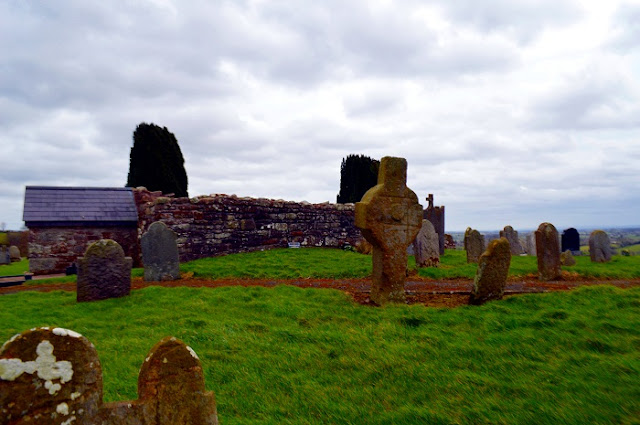Into the West: Errigal Keerogue Church
The next place on my
itinerary wasn’t too far from Knockmany … at least once I’d gotten myself
un-lost and back on the main road. I’ve visited Errigal Keerogue Church a few
times over the years and it always draws me back. The first time I was taken
there I was in the company of the wonderful Chris Lynn, driving back from a
Historic Monuments Council meeting. I always enjoyed being in Chris’s company -
it was inevitably both a pleasure and an education. On this occasion he was
talking about the Clogher valley landscape and a number of his experiences and
adventures therein when he mentioned Errigal Keerogue. Had I been there, he
asked? Er … no … no I’d not. To be honest, I’d not even heard of it, much less
had it on a personal archaeological ‘bucket list’, but I wasn’t going to
mention that bit. With that he eased the car onto a side road and after only a
few minutes we were parking up in front of a seemingly rather ordinary ruin of
a medieval church. Except that it’s not all that ordinary and I was treated to
an excellent tour of the site.
Believed to have been
founded in the 6th century, the Annals of Ulster make reference to the site on
a number of occasions, going back to the early 9th century. The present church
was later and appears to be the same structure that was destroyed in 1380. The
site is renowned in archaeological circles for the large number of broken
rotary quern (grinding) stones that have been found there, some of which were
reused in the church fabric. One of the suggestions was that their presence
here indicates that the site was the focus for forced breakage of querns in an
attempt to create a milling monopoly. While it wouldn’t be the only time that a
church organisation attempted
to seize public services, it is likely that the querns merely represent the
reuse of the most durable materials from the earlier history of the site.
While the location is
really spectacular, giving great views out over the surrounding landscape, the
attraction here is the high cross. This large cross with a circular head has
been described as ‘primitive’ and ‘archaic’, but it appears that it was
actually never finished as the stone contains a major flaw. While I do love a
well-made high cross with all the interlace and figure carving, I particularly
like this one because it allows us to ‘glimpse behind the curtain’ at how the
sculptor worked. If you looked closely at the west face of the cross, you can
see that it is marked out with carving guidelines and that work on the central
boss on had commenced. On the opposite, east, face lightly incised lines
marking out the shape of the ring-head are visible.
The other thing that’s
worth a visit is the unusual medieval carved stone known from the site (a
replica is visible on site, the original is in the keeping of the DoE). It is a
much worn carving in low relief that is interpreted as a depiction of a knight,
dating to (at latest) the 14th century. The space where the face should be is a
recessed depression, suggesting that the facial features were created
separately, perhaps in another medium like wood alabaster, metal etc., and are
now lost.
Again, after an all too
brief moment to survey the landscape, it was time to make my way back to the
car and take up my journey once again.
Notes:


















Comments
Post a Comment